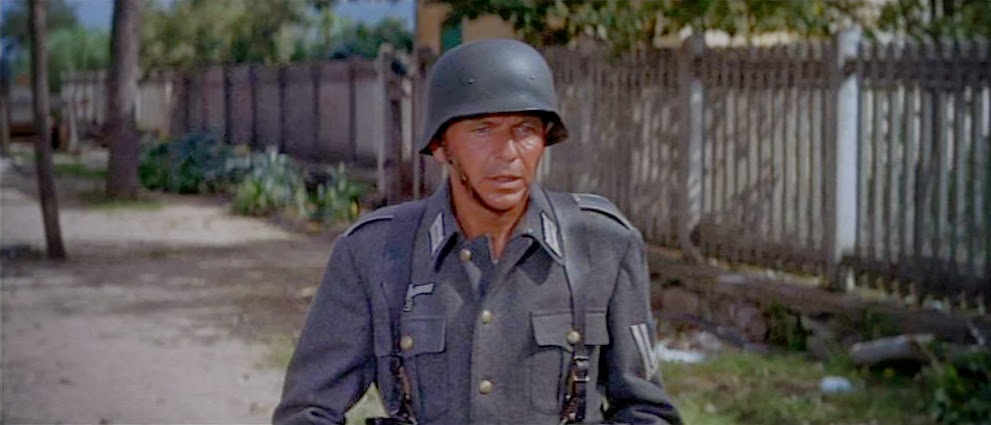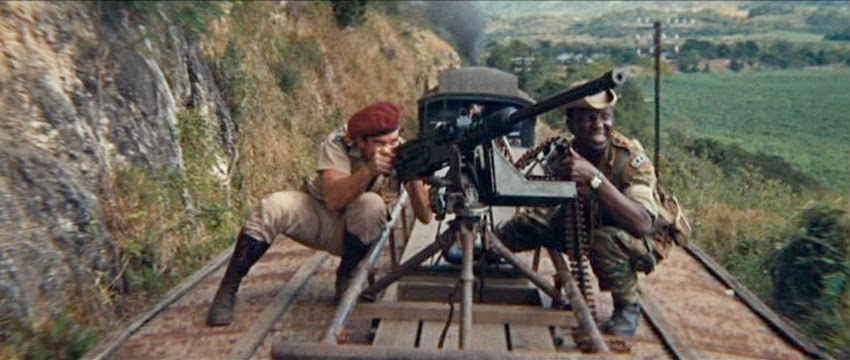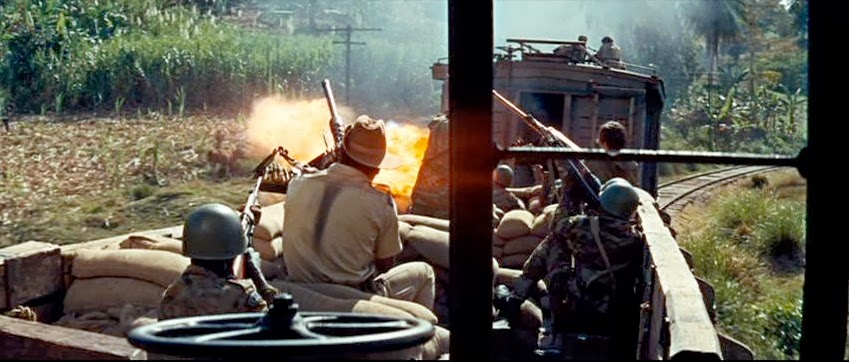The Evil of Frankenstein, released in 1964, was the third film in Hammer’s Frankenstein cycle. It’s an interesting variation on the formula.
Once again the hostility of the locals to his experiments has forced Baron Frankenstein (Peter Cushing of course) and his assistant Hans (Sandor Elès) to flee. He decides to return to Karlstadt. Although he was banished from the town a decade earlier, he still has substantial assets there, assets which he needs to convert into cash to fund his scientific work. Unfortunately on his arrival he finds that his chateau has been looted and left in ruins.
By a strange stroke of fate, due to an encounter with a deaf-mute beggar girl (played by Katy Wild), he discovers the frozen body of the creature he had created there ten years earlier, and this inspires him to attempt to revive the monster.
Unfortunately it proves difficult to restore the creature to consciousness, until Frankenstein hits on the idea of using a travelling hypnotist (by chance it happens to be carnival time in Karlstadt) to re-awaken the creature’s brain. The hypnotist, Professor Zoltán (Peter Woodthorpe), turns out to be an evil hypnotist who plan to use his hold over Frankenstein’s creation in order to gain wealth and exact revenge on his own enemies.
The greatest strength of Hammer’s Frankenstein films is the character of Baron Frankenstein himself, an uneasy mix of idealism and arrogance, genius and insanity. Peter Cushing (giving some of his best ever performances in this role) was able to tease out the various strands in the baron’s make-up with considerable subtlety and sensitivity. The Evil of Frankenstein gives us some tantalising hint of the obsessed scientist’s character flaws and complexities, hints which perhaps should have been more fully developed.
Despite the title The Evil of Frankenstein shows us a relatively sympathetic Baron Frankenstein. The evil in this movie comes more from others who misuse his creation than from the baron himself. Cushing managed to make each of his performances as Frankenstein slightly different. This time around he’s certainly obsessive but his chief failure is his unwillingness to believe that his scientific work, pursued for what he conceives to be noble purposes, can have dangerous and disastrous results. He is a man embittered by what he sees as the refusal of the world to allow him to continue his research in peace, and further embittered when he realises too late that Professor Zoltán is not only using him but endangering his work. Cushing is able to convince us that Frankenstein genuinely believes himself to be a fundamentally benign misunderstood genius.
This movie also features a very sympathetic monster. Like his creator he is used for evil purposes by the unscrupulous Zoltán. There are some touching scenes between the monster and the deaf-mute beggar girl, who both seem to recognise each other instinctively as outcasts.
Cushing as always dominates but he gets good support from the other players with Peter Woodthorpe making an interesting villain, a man who is evil because he is weak and selfish and self-centred rather than actively pursuing evil.
The Frankenstein cycle presented Hammer with a major creative challenge. By its very nature it was a rather restrictive formula. Each movie had to have Baron Frankenstein creating (or in this case) recreating another monster who would eventually run amok and leave the baron’s work in ruins. It’s to the studio’s credit that they managed to keep adding enough variations to that basic formula to keep it interesting. In this case screenwriter Anthony Hinds came up with a rather clever idea, shifting the focus of evil onto another character (Professor Zoltán) thereby casting both Frankenstein and his monster as victims.
The movie has other strengths as well. Director Freddie Francis (who won two Academy Awards as a cinematographer) had a particular flair for visuals, and The Evil of Frankenstein looks quite wonderful. The baron’s laboratory is magnificent. The visual strengths are sufficient in themselves to maintain the viewer’s interest even when the plot falters.
Given that it’s the look of this movie that is its strong suit it’s fortunate that the DVD included in Universal’s superb eight-movie Hammer boxed set is absolutely stunning. The picture is crystal clear, the colours are rich and vibrant. It’s a feast for the eyes.
The Evil of Frankenstein has always been unfavourably compared to the Terence Fisher-directed Frankenstein movies. While it lacks the subtlety and moral force of Fisher’s movies it’s a better movie than its reputation would suggest and it looks fabulous. Well worth a look.



































